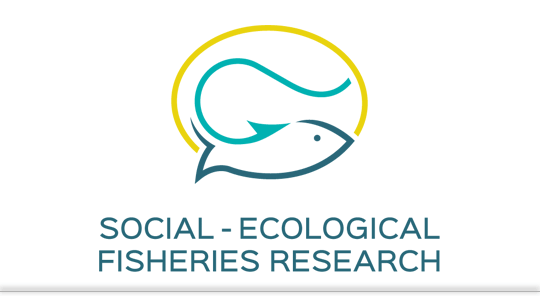Key findings
Since 2000 (start of the dissertation), division head Prof. Dr. Arlinghaus is working on issues of recreational fisheries. Since 2006 the work is conducted in a team of undergraduate and graduate students, postdocs and national and international colleagues and cooperating research groups. The work of the past 15 Jahren has led to five key innovations:
(1) Recreational fisheries is the most important user of freshwater fish stocks
During his dissertation Robert Arlinghaus (2000 – 2003) conducted in-depth, representative nationwide surveys among anglers. It was found that recreational fisheries constitute the main user of wild fish stocks in inland waters. In Germany about 3.3 million people fish recreationally and these people harvest about ten times more fish than the entire commercial river and lake fisheries in Germany (Arlinghaus 2004, 2006a). Macroeconomically recreational angling is as important as the entire commercial fisheries sector, including industrial marine fisheries, marketing and fish sale. About 52,000 jobs are directly or indirectly depended on recreational angling expenditure (Arlinghaus 2004).
(2) Anglers are heterogonous, but when catches are low the sunset remains incomplete
Anglers are characterized by a large degree of heterogeneity in tastes, preferences, attitudes and behaviours (Arlinghaus et al. 2008; Beardmore et al. 2011). However many anglers, independent of their prime motives, are similar in their desire to experience sufficient catches (Arlinghaus & Mehner 2005; Arlinghaus et al. 2008). In particular, many anglers are driven by the desire to catch large fishes, which is also a key determinant of site choice behavior (Arlinghaus et al. 2014; Beardmore et al. 2015). Such findings may be perceived of being inconsistent with the results of decades of angler motivation research, reporting that the prime motive of anglers is „temporary escape“ or „being out there in nature“ (Arlinghaus 2006). However, non-catch aspects are much easier satisfied than catch outcomes. This in turn leads to catches constraining angler satisfaction. This finding has implications for fisheries management who has – in contrast to some claims in the social science literature – to focus on provision of catch experiences if the aim is to generate satisfied anglers. However, the most realistic predictions about socio-economically optimal input and output regulations are realized when both catch- and non-catch components are considered when modelling the behavior of anglers of various types and how they respond to changes in a fishery (Johnston et al. 2010, 2013, 2015).
(3) Angling, evolution, fish personality and the timidity syndrome
Intensive and selective recreational fisheries can lead to life-history evolution (Jørgensen et al. 2007) and select for fast life-histories (Arlinghaus et al. 2009; Matsumura et al. 2011; Uusi-Heikkilä et al. 2015). In addition, using high resolution telemetry (Krause et al. 2013) and pond experiments with largemouth bass, we found that angling selects for active, bold, aggressive and reproductively superior individuals (Kobler et al. 2009; Sutter et al. 2012; Alós et al. 2012; Uusi-Heikkilä et al. 2015). As a result, the surviving fishes are increasingly harder to catch (Sutter et al. 2012; Alós et al. 2015a,b). Possibly, intensive angling leads to a timidity syndrome where catches decline faster than underlying fish abundance (Arlinghaus et al. 2016).
(4) Harvest slots are superior to minimum-length limits
Empirically using model organisms (Uusi-Heikkilä et al. 2010, 2015), in pond experiments with piken (Arlinghaus et al. 2010) and by way of simulation modelling (Arlinghaus et al. 2010; Matsumura et al. 2011; Gwinn et al. 2015; Uusi-Heikkilä et al. 2015) we could show that harvest slots (who protect both immature and very large mature fishes) promise to generate outcomes that are more positive for angler well-being and ecological stability compared to those emerging from traditional minimum- size limits. We developed decision trees to allow fisheries managers to identify which management tools are likely to be superior given social-ecological contexts (FAO 2012; Arlinghaus et al. 2015).
(5) Many fish stocking measures do not generate fisheries benefits and are ecologically risky, but involving anglers in practical fish stocking experiments leaves a large legacy of environmental education
From 2010 to 2014 we conducted a large cooperative fish stocking experiment with 18 angling clubs in Lower Saxony. Fish stocking as management panacea emerges from naturally fluctuating fish stocks (van Poorten et al. 2011) and due to catch-dependent pro-stocking social norms (Arlinghaus et al. 2015). Using pike as a model species we showed that fish stocking often fails to generate fisheries benefits (Hühn et al. 2014), while carrying substantial risks for genetic biodiversity (Eschbach et al. 2014). Anglers strongly believe in stocking (Arlinghaus & Mehner 2015), but anglers and fisheries managers involved in active adaptive fish stocking experiments strongly alter their beliefs in stocking and show greater willingness to use alternative management means (Arlinghaus et al. 2015). Such effects cannot be expected from standard frontal teaching of lectures about sustainable fish stocking (Fujitani et al. 2016).
